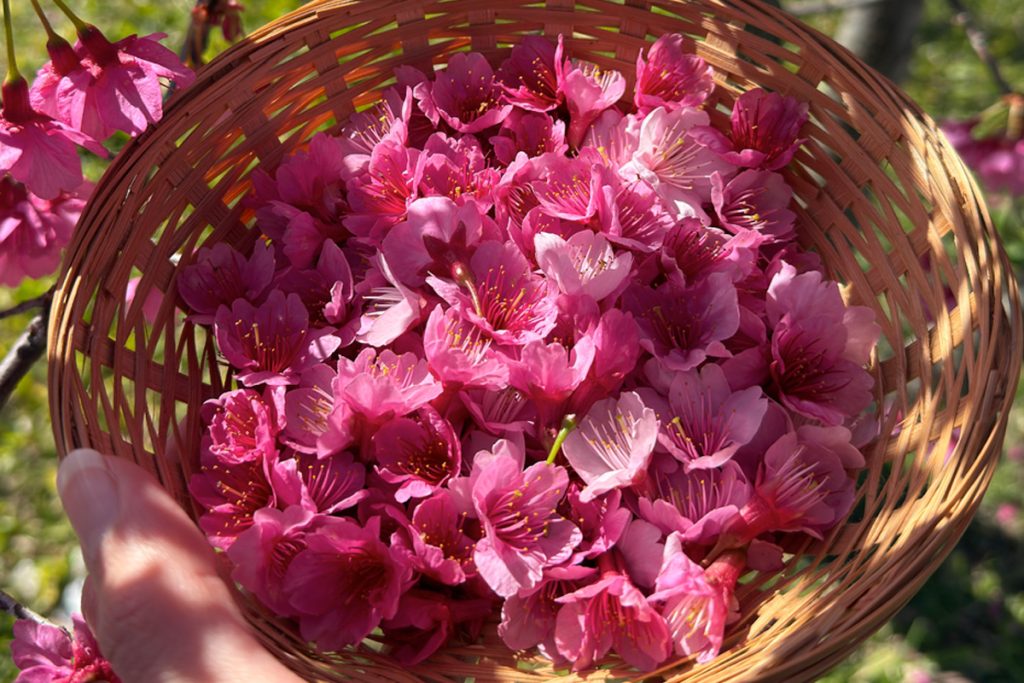The meadow is a recipe. The forest, a forgotten pantry.
There is a kind of alchemy in the act of foraging.
Not the kind that turns metals to gold, but one that turns footsteps into memories and petals into flavor. Foraging wild edible flowers is to walk with intention—eyes softened, senses sharpened, listening not just with ears but with presence.
It is the slow art of noticing.
In the quiet corners of nature, where paths aren’t paved and time moves without clocks, wild violets, elderflowers, dandelions, and wood sorrel bloom without invitation. They grow untamed, without labels or packaging, and yet they carry centuries of tradition, nourishment, and story.
WHY FORAGE?
Some flavors cannot be found in shops. Some ingredients only grow where your hands are willing to reach, where your soles have wandered softly and there is something deeply human in gathering what the earth offers, with respect and reciprocity.
Additionally, foraged flowers taste like freedom. They taste like a season, a place, a specific moment in your life when you stopped and bent low to greet a bloom.
There is a kind of alchemy in stepping outside with an empty basket and returning with beauty you can eat.
To forage is to listen—to the hush beneath trees, the wind combing through tall grass, the shimmer of dew clinging to petals. It is not just an act of gathering but a way of becoming porous to the land, of remembering that food once had seasons, scents, and stories.
Edible flowers are not merely ingredients; they are invitations to pause, to notice, to remember that nourishment can be tender and fleeting.
WHERE THE WILD FLOWERS WAIT
You don’t need a secret meadow to begin. Often, the edges of paths and forgotten corners bloom with generosity. Let yourself be guided not just by what is edible, but by what feels like an encounter.
In early spring, sweet violet peeks through thawed soil, followed by the pale shimmer of chickweed and the starry faces of cleavers and miner’s lettuce. Soft, edible beginnings.
As spring deepens, dandelions lift their golden heads, one by one, and red clover thickens in the fields. Wild geranium and wood sorrel spread like small invitations across the forest floor. The first elderflowers bloom, like lace from trees.
Summer sings louder. Queen Anne’s lace unfolds its delicate crown; bee balm flares in fuchsia; wild mustard and yarrow dust the air with pollen. Evening primrose opens late — just as the light begins to fade — and wild rose clings to hedges like a forgotten perfume.
By late summer, borage reappears where it shouldn’t, calendula colors the margins of old fields, and mallow blooms soft and generous, almost like it’s remembering something for you.
These are not flowers you plant.
They are the ones that find you — if you move slowly enough.
Each flower teaches something: to tread lightly, to wait for the right season, to see beauty in what is often overlooked.
WHAT TO KNOW BEFORE YOU GATHER
Foraging wild edible flowers is a practice of reverence, not just harvest.
- Identification is key. Never consume a flower unless you are 100% sure it is edible. Bring a guidebook or use reputable apps, and consult local foraging communities.
- Harvest lightly. Take no more than you need — a third is a common rule — and only from abundant patches.
- Avoid roadsides and sprayed areas. Pesticides, heavy metals, and contamination linger in places humans frequent.
- Check local laws. In some countries or protected areas, foraging may be restricted or regulated.
A RITUAL OF GATHERING
When you gather a flower, pause.
Say thank you.
Hold the bloom to your face – not just to smell, but to remember.
What does it feel like?
What does this place sound like today?
What will you do with this offering?
FROM WILD TO TABLE
Once home, wild flowers can be transformed:
- Elderflower into syrup, cordial, or infused honey
- Wild violets into candied decorations or herbal tea
- Dandelion petals into jelly or golden fritters
- Red clover into tinctures or soft cookies
However – and I suggest you try this – they can also remain as they are. A bowl of fresh petals on the table is a reminder that not everything needs to be cooked to nourish.
WHY THIS MATTERS
Because when you forage, you no longer look at a field the same way. Your children will always remember the flower you taught them was safe to taste and you can cherish the time spent together. Cooking then becomes a conversation- not just with ingredients, but with land, with memory, with season and ultimately, with yourself.
Luckily, one day, a scent- faint, green, floral- will catch you off guard and take you back to the day you picked a flower whose name you finally knew.
Now that you know how to forage with care and presence, let’s walk the paths where wild edible flowers bloom. Explore the five landscapes of foraging.
SUGGESTED ADDITIONS
Want to deepen this practice?
- Save petals between book pages. Write what you felt that day.
- Read: Braiding Sweetgrass by Robin Wall Kimmerer, Foraging Wild Edibles by John Lewis and The Herbal Kitchen by Kami McBride (Note: I may receive a small commission if you choose to buy through this link, at no extra cost to you.)
